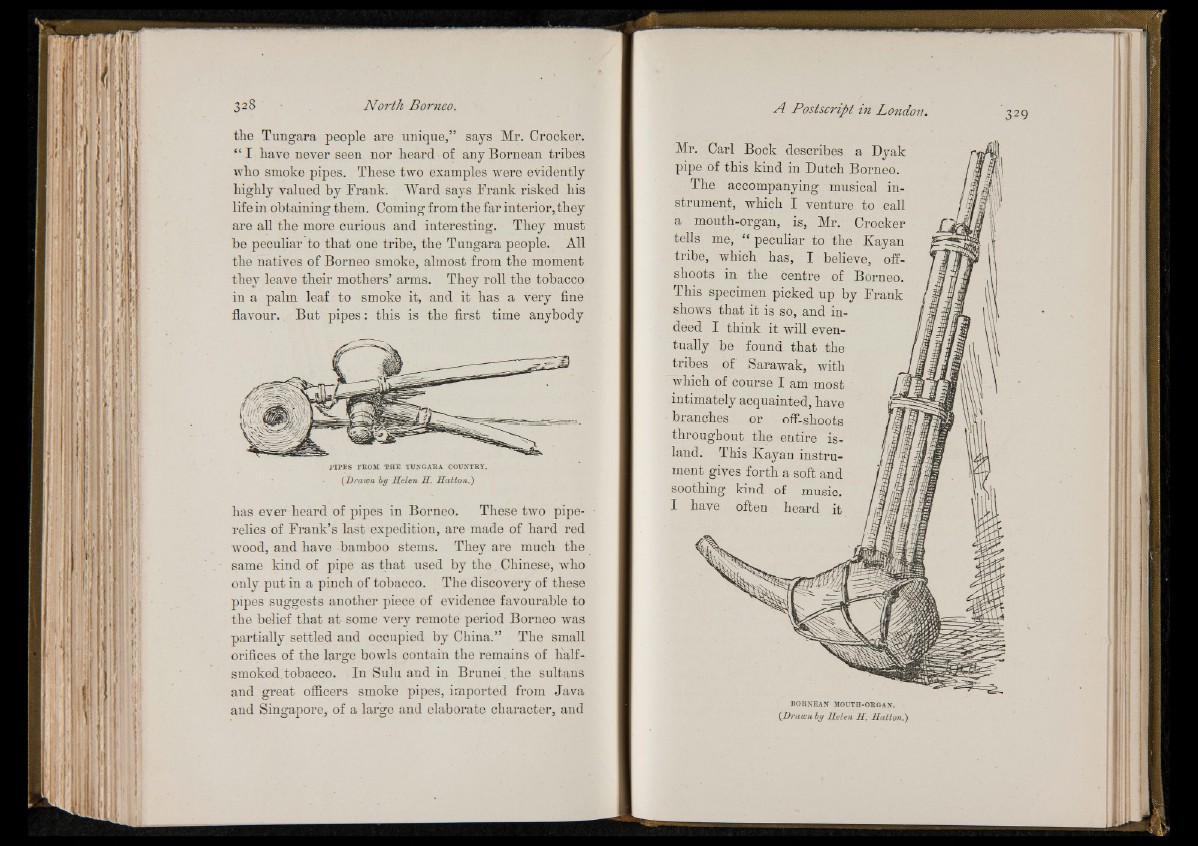
the Tungara people are unique,” says Mr. Crocker.
“ I have never seen nor heard of any Bornean tribes
who smoke pipes. These two examples were evidently
highly valued by Frank. Ward says Frank risked his
life in obtaining them. Coming from the far interior, they
are all the more curious and interesting. They must
be peculiar to that one tribe, the Tungara people. All
the natives of Borneo smoke, almost from the moment
they leave their mothers’ arms. They roll the tobacco
in a palm leaf to smoke it, and it has a very fine
flavour. Bat pipes: this is the first time anybody
PIPES PEOM THE TUN GAB A COUNTRY.
{Drawn by S e le n S . Hatton.)
has ever heard of pipes in Borneo. These two pipe-
relics of Frank’s last expedition, are made of hard red
wood, and have bamboo stems. They are much the
same kind of pipe as that used by the . Chinese, who
only put in a pinch of tobacco. The discovery of these
pipes suggests another piece of evidence favourable to
the belief that at some very remote period Borneo was
partially settled and occupied by China.” The small
orifices of the large bowls contain the remains of halfsmoked,
tobacco. In Sul a and in Brunei, the sultans
A Postscript in London.
Mr. Carl Bock describes a Dyak
pipe of this kind in Dutch Borneo.
The accompanying musical instrument,
which I venture to call
a mouth-organ, is, Mr. Crocker
tells me, “ peculiar to the Kayan
tribe, which has, I believe, offshoots
in the centre of Borneo.
This specimen picked up by Frank
shows that it is so, and indeed
I think it will eventually
be found that the
tribes of Sarawak, with
which of course I am most
intimately acquainted, have
branches or off-shoots
throughout the entire island.
This Kayan instrument
gives forth a soft and
soothing kind of music.
I have often heard it
and great officers smoke pipes, imported from Java
and Singapore, of a large and elaborate character, and BORNEAN MOUTH-OB GAN.
([Drawn by Helen H. Hatton.)